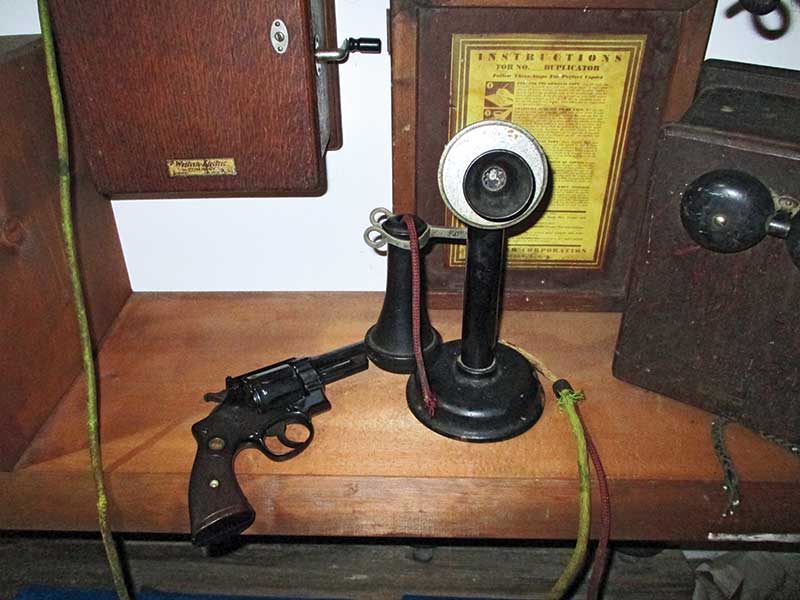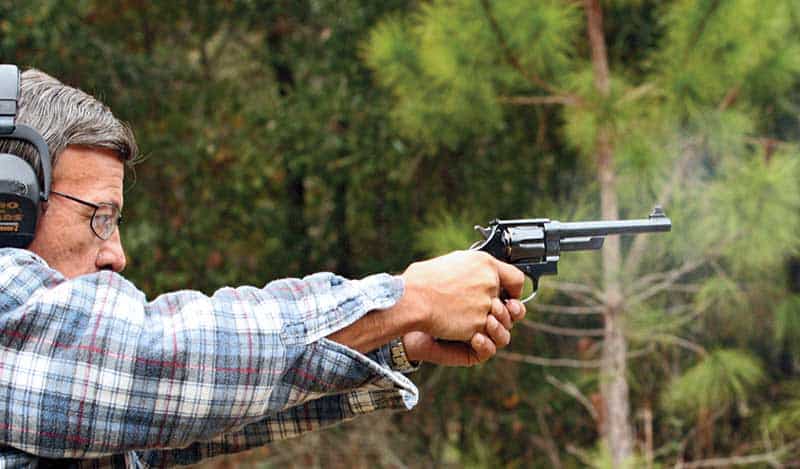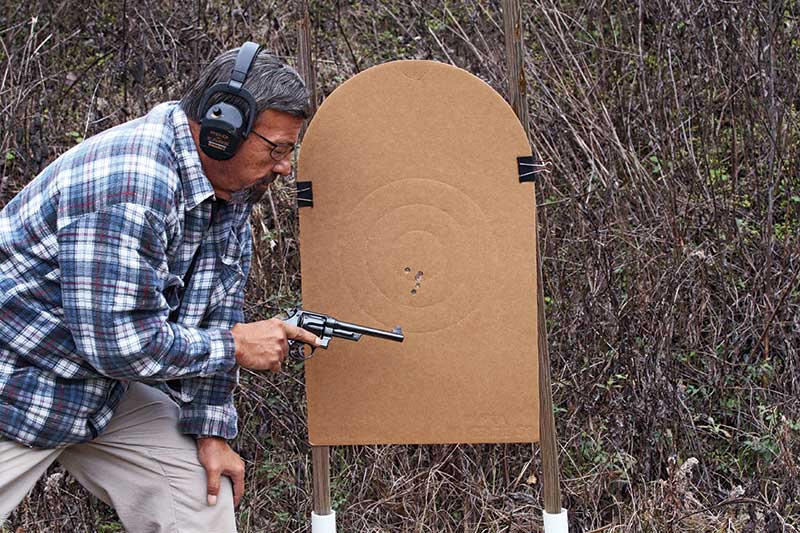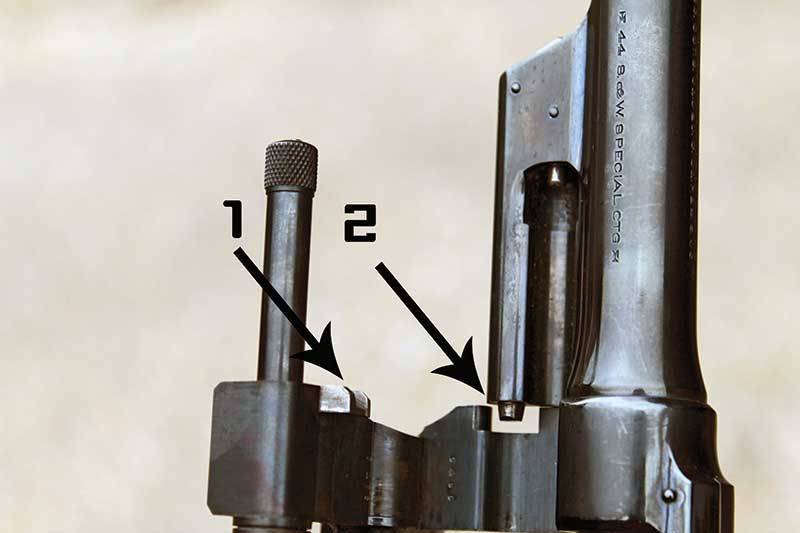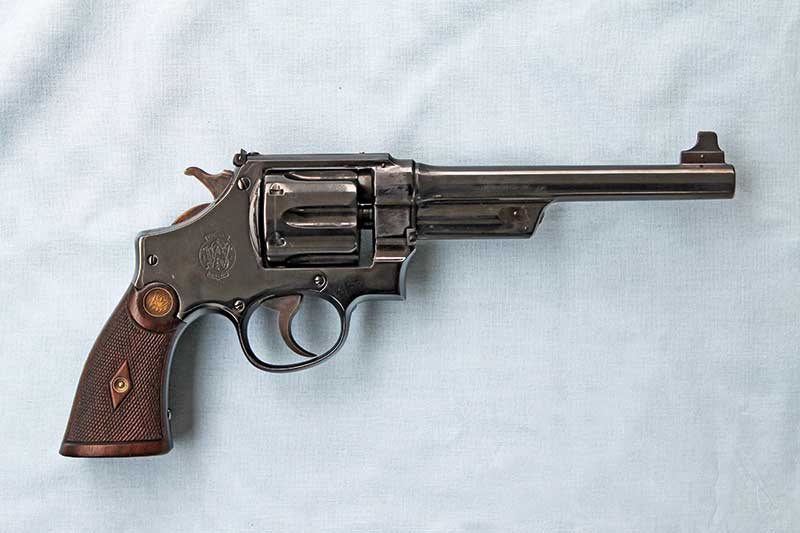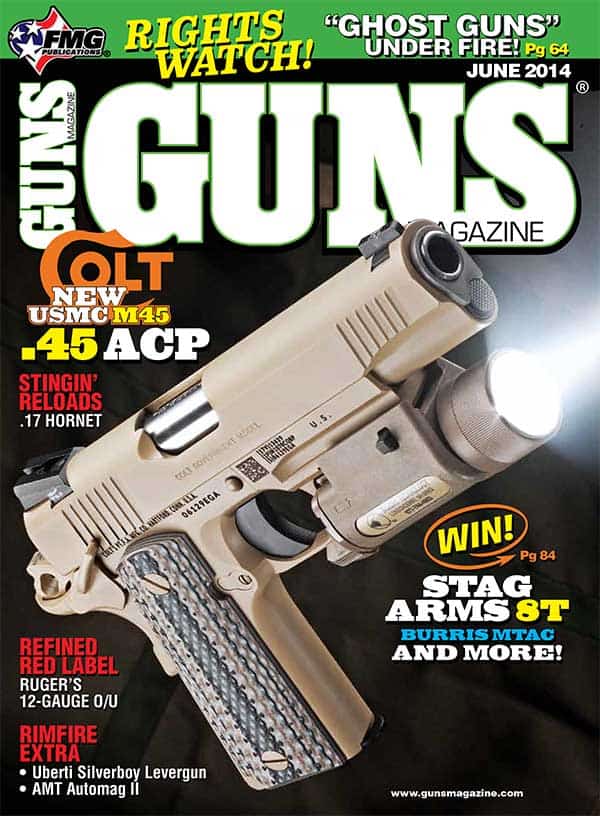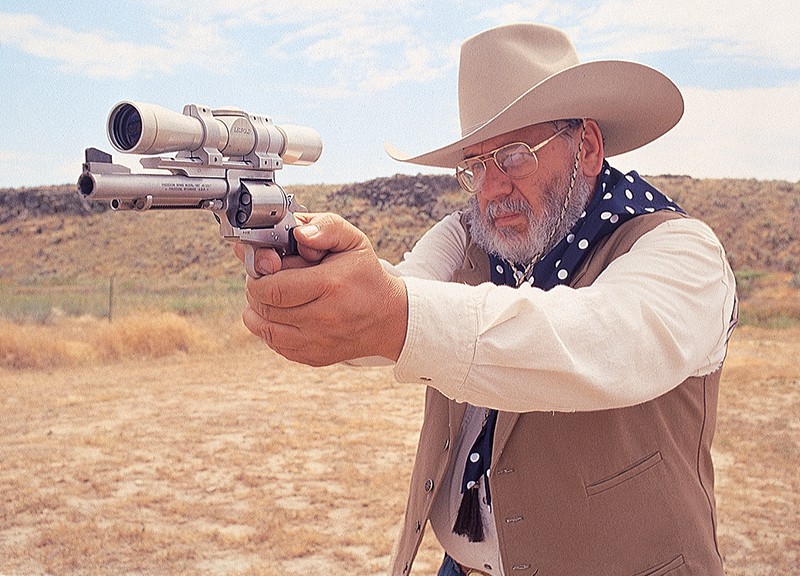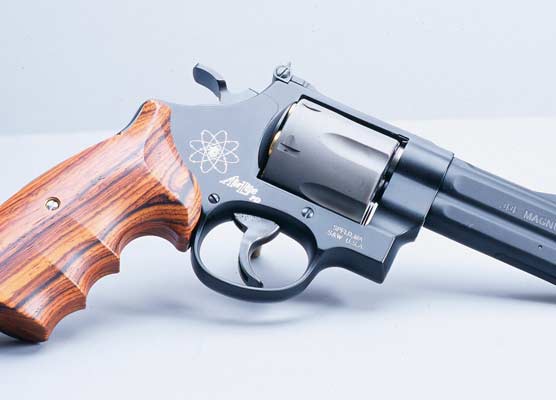“The Finest Revolver
Ever Made…”
S&W’s Triple Lock Combined Many “Firsts”
In Less Than A Decade Of Production
“In 1907 Smith & Wesson brought out the Triple Lock, perhaps the finest revolver ever manufactured anywhere, at any time. Today no example of finer revolver making is to be had.” Those words are found in the classic Sixguns written by the great Elmer Keith, who for many years served as Shooting Editor of GUNS Magazine. S&W had actually dubbed it the “New Century” revolver, and some collectors refer to it as the “.44 Hand Ejector, First Model,” but Triple Lock was the name which stuck.
Because Smith & Wesson Could
In the book Smith & Wesson 1857-1945 (Barnes, 1966) Robert Neal and Roy Jinks say, “Most authorities believe the third lock provided on this model was put there by Smith & Wesson more as an example of the ultimate in precision machine work than as a necessary item for extra strength.”
If so—as seems likely—it would not have been the only time in Smith & Wesson’s history they added a feature more cosmetic than intrinsically useful, simply to showcase the machining skill of which they were capable. In 1935, they checkered the top-strap of the frame of their deluxe .357 Magnum revolver, a feature continuing throughout what later came to be called their Model 27 series. The Triple Lock in 1907, and the Registered Magnum and the Model 27 later, were the flagships of the fleet: the finest, most expensive revolvers Smith & Wesson produced at the given time.
Details
According to Jim Supica and Richard Nahas in The Standard Catalog of Smith & Wesson, the Triple Lock was primarily chambered in the round it was made for, the .44 Special, to the tune of 13,753 guns. Some were produced in .45 Colt (which Keith called the finest double-action revolver ever made in that caliber), though sources differ on the exact number so chambered. Much smaller numbers were made in other calibers, including .44-40, .38-40 and even a very few allegedly in .22 Long Rifle. More than 1,200 were produced in .455 for the Brits, and therein lay the beginning of the end of the Triple Lock.
Embroiled in the trench warfare of WWI, England wanted more S&W .455s, but feared the ejector rod housing and the precisely-machined third lock would become a trap for gun-jamming mud. They ordered thousands more, but insisted those two features be done away with. They were, and the Second Model .44 Hand Ejector had neither, resembling an enlarged .38 Special Military & Police and becoming essentially the shape of the famous 1917 model. The change came in 1915, when the Triple Lock was discontinued. Popular demand would eventually bring limited production of the Third Model, the 1926 Hand Ejector .44 with the ejector shroud back, but the Triple Lock was gone for good. It would return in much different form, by different name, in the 21st Century with a ball-detent crane lock on the X-frame .500 and .460 revolvers.
In less than a decade of production the Triple Lock had set a high-water mark for revolver quality. In 1916 in Sweetwater, a Triple Lock saved the life of famed Texas Ranger Frank Hamer, killing his assailant with a single .44 Special slug fired weak hand only because Hamer had been wounded in the gun-side shoulder at the opening of the ambush. Generations to come would thank the designers of the Triple Lock for paving the way for some of the finest handguns the world has ever seen.
Purchase A PDF Download Of Guns Magazine June 2014 Issue Now!

Get More Revolver Content Every Week!
Sign up for the Wheelgun Wednesday newsletter here:
